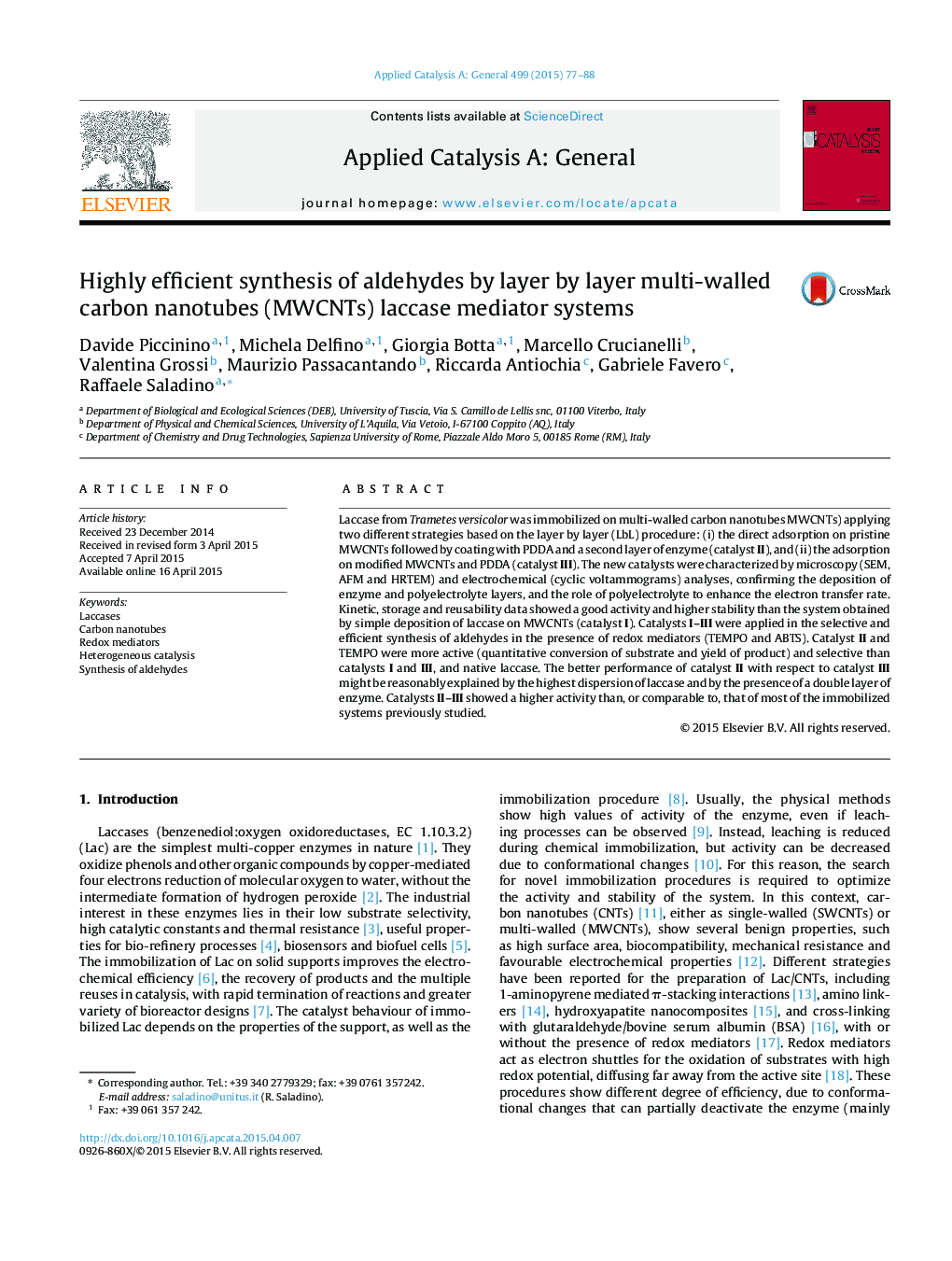| Article ID | Journal | Published Year | Pages | File Type |
|---|---|---|---|---|
| 39188 | Applied Catalysis A: General | 2015 | 12 Pages |
•Laccase was stabilized on carbon nanotubes by the layer by layer (LbL) procedure.•New catalysts oxidized alcohols to aldehydes in the presence of redox mediators.•Analytical techniques confirmed the immobilization of the enzyme.•Quantitative conversion of substrates and yield of products were obtained.•Catalysts were used for more runs retaining their activity.
Laccase from Trametes versicolor was immobilized on multi-walled carbon nanotubes MWCNTs) applying two different strategies based on the layer by layer (LbL) procedure: (i) the direct adsorption on pristine MWCNTs followed by coating with PDDA and a second layer of enzyme (catalyst II), and (ii) the adsorption on modified MWCNTs and PDDA (catalyst III). The new catalysts were characterized by microscopy (SEM, AFM and HRTEM) and electrochemical (cyclic voltammograms) analyses, confirming the deposition of enzyme and polyelectrolyte layers, and the role of polyelectrolyte to enhance the electron transfer rate. Kinetic, storage and reusability data showed a good activity and higher stability than the system obtained by simple deposition of laccase on MWCNTs (catalyst I). Catalysts I–III were applied in the selective and efficient synthesis of aldehydes in the presence of redox mediators (TEMPO and ABTS). Catalyst II and TEMPO were more active (quantitative conversion of substrate and yield of product) and selective than catalysts I and III, and native laccase. The better performance of catalyst II with respect to catalyst III might be reasonably explained by the highest dispersion of laccase and by the presence of a double layer of enzyme. Catalysts II–III showed a higher activity than, or comparable to, that of most of the immobilized systems previously studied.
Graphical abstractFigure optionsDownload full-size imageDownload high-quality image (99 K)Download as PowerPoint slide
